Frida laid her fourth egg on Sunday morning a little before 9:30 AM on March 24! Now the pair will remain on their clutch of eggs for the next 28-30 days. Hatching will begin sometime at the end of April. The female will do the majority of incubation but they will take turns incubating, so that Frida can stretch her wings and feed away from the nest.
Category: Uncategorized
For those who have tuned in lately, NJ Conserve Wildlife Biologists has been witnessing what is likely a territorial dispute, which is when a rival adult is attempting to take over the nest. They have seen this when the female calls and leaves her nest to defend her territory. This happened yesterday and again this morning.
The male has also been heard calling alongside his mate. They are not sure if it is a male or female who is attempting the takeover, but 2019 the previous female was replaced by this unbanded female (Frida). We are seeing this occur more and more at established nests as they are desirable to breeding age adults, which there are more of these days than in past years.
It is hard to capture on camera but we may see a glimpse of a passing falcon on the wing. Behavior of adults is how we can tell what is going on and having audio really helps when they are not visible on camera. Time will tell if any turnover will occur here.
Egg # 3
The male peregrine falcon reveals Egg #3 early Friday morning March 22nd.
Frida & Mango Have Two Eggs
Frida and Mango welcome spring with their first egg of the season laid on March 16, 2024 in the perigloo that sits atop the Union County Courthouse in Elizabeth. Peregrine falcons can lay up to four eggs and will begin incubation of their eggs after the last one has been laid. The eggs are laid a day or two apart.
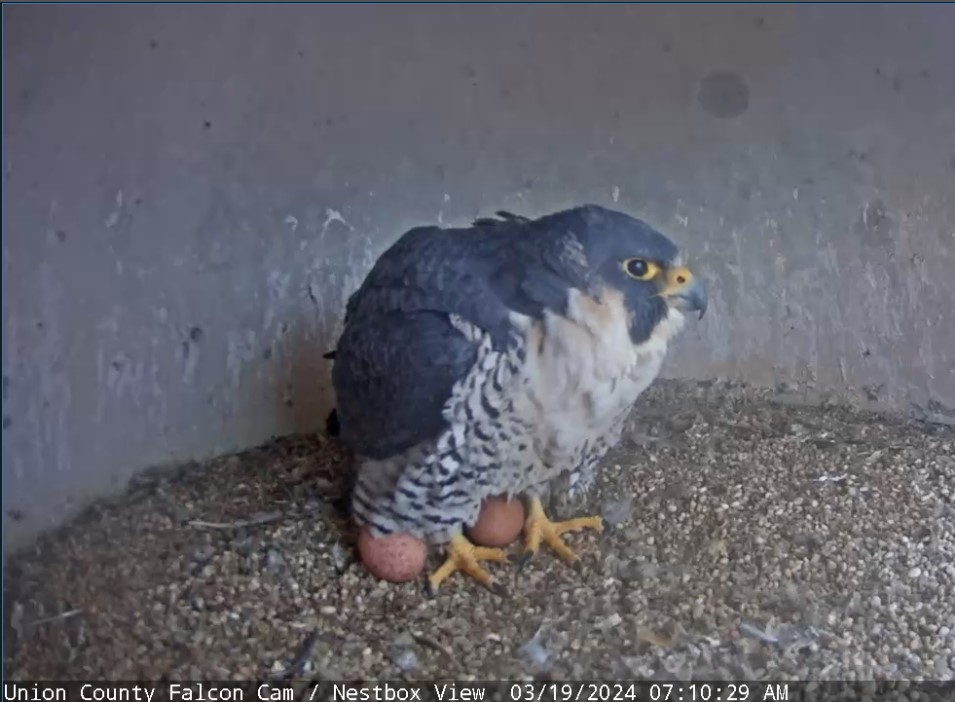
The female laid the second egg early in the morning of March 19, 2024! The pair will continue to take shifts to partially incubate the eggs until they have a full clutch. At times the eggs will be left alone, so don’t be alarmed by this.
When adults exchange nest duties, the eggs are repositioned and rolled. We will be looking for egg three in another day or two.
Important Falcon Update
This brood of four female falcons were officially fledging age (that is, 6 weeks old) on June 9th. They disappeared on that date and haven’t been on camera since then. But they didn’t go far: for a couple of days, their heads and/or wings could be seen occasionally as they flapped on the ledge that is just one level below the roof, where the cameras cannot view. This isn’t unusual and happens every season. What’s unusual, however, is they didn’t just “pop” back up to nest level within days!
Union County Trailside staff went out to observe from the ground, and saw all four fledglings — flying! As a group, the fledglings have been exploring other areas of the courthouse and nearby buildings. The adults bring food wherever the youngsters are, so all that action has been away from the usual nest-level roof.
I know we’re all anxious to see them and the fun flight-learning antics that come with new flyers. We hope they will find their way back to the highest point in the city and back on camera!
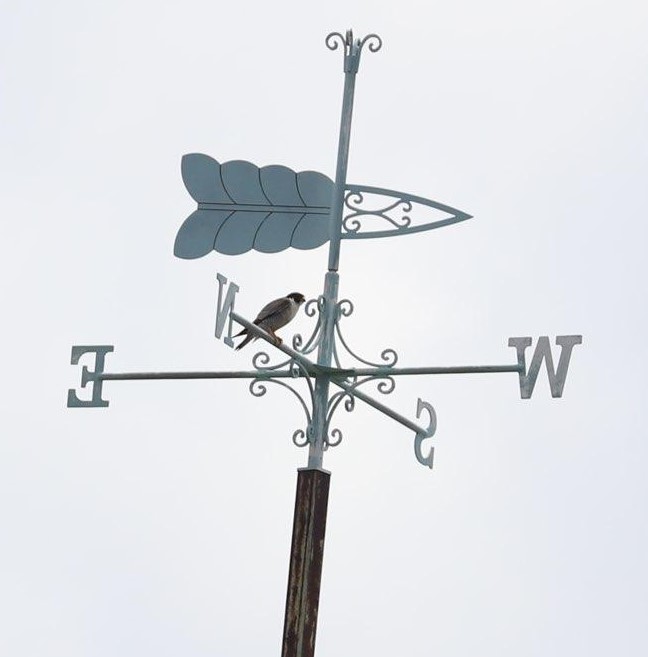
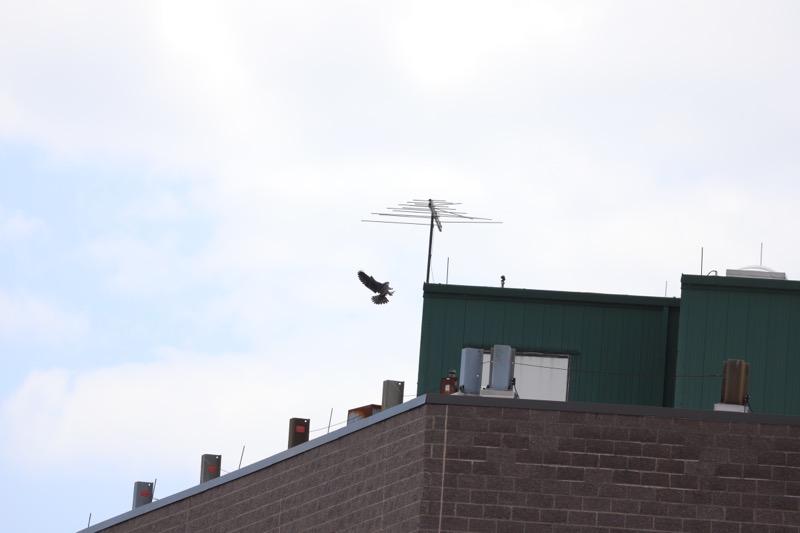
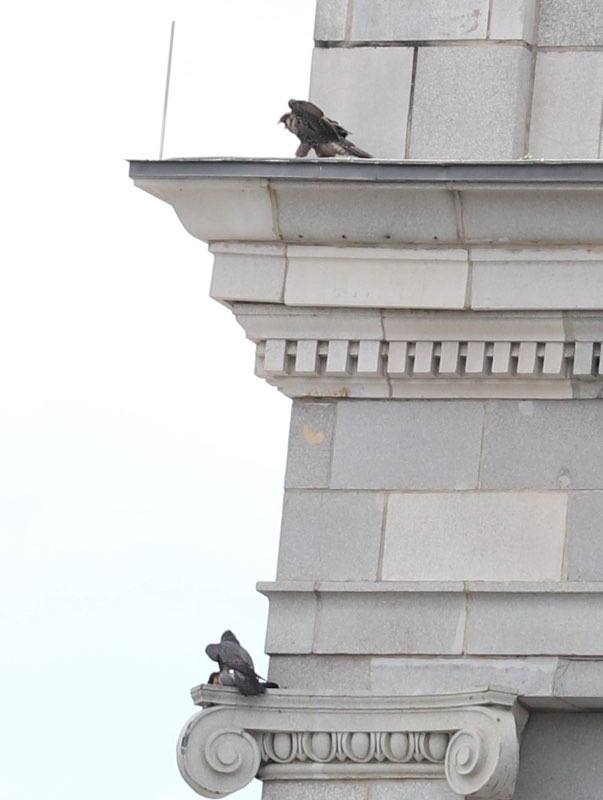
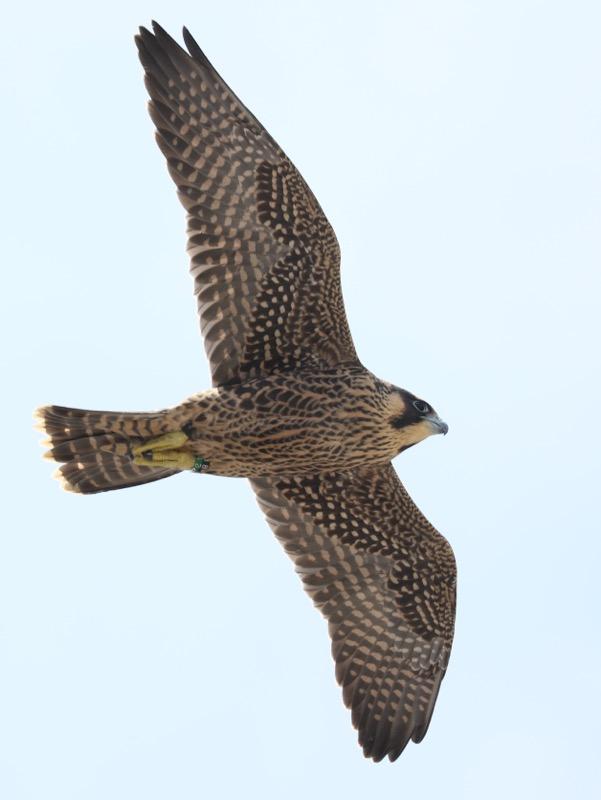
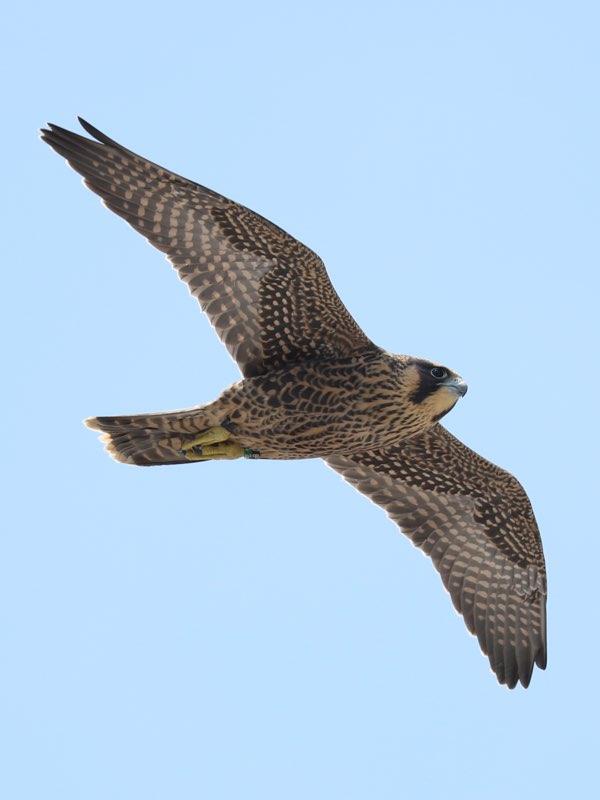
Testing Their Wings
Well, time flies and soon so will these young female falcons! They’re now exploring the entire roof of the Union County Courthouse. As you may notice if you tune in and don’t see them on the main camera. Now they are more frequently observed on the Rooftop View camera, which is on the opposite side of the building.
These young are now starting to “branch out” which is a term meant more for raptors who nest in trees, but it is where they start to explore more of their direct surrounding while strengthening their wing/flight muscles by flapping. They will do this more as their flight feathers come in more fully. When they reach 7 weeks old then they will start to fledge.
Falcon Banding

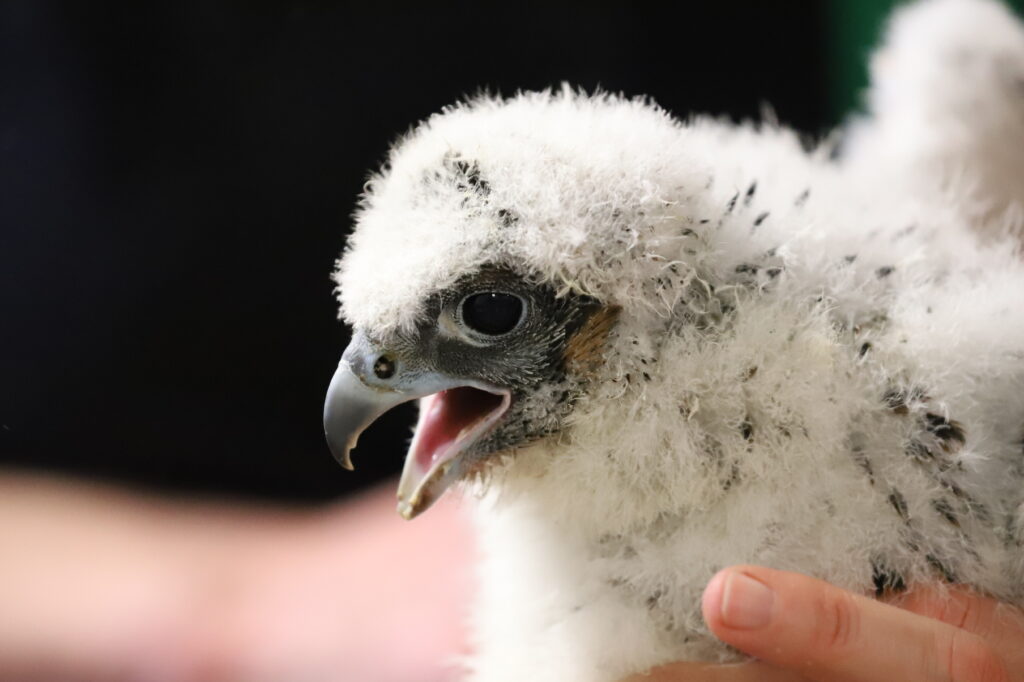






On May 22, 2023, the four 3-4 week old eyases were banded for future tracking. Kathy Clark, Acting Chief of the NJDEP Fish & Wildlife Endangered and Nongame Species Program, Union County staff and a few guests ventured onto the roof of the Union County Courthouse, bagged young and brought them inside to stay cool and calm for banding. Everything that happened outside was streamed live.
All young were determined to be female, which is the same as last year! They were all banded with both federal and state auxiliary bands, which allow biolgists, photographers and birders to be able to identify them in the field (when alive). Their bands are: BN/23, BN/24, BN/25 & BN/26. All were healthy with blood samples taken for lead analysis. Every day they are dropping more white downy plumage which is showing their brown body and flight feathers. Soon they will be venturing further and further from the nest box as they start to strengthen their wing muscles for their first flight.
Thank you to all who support the UC Falcon Cam!
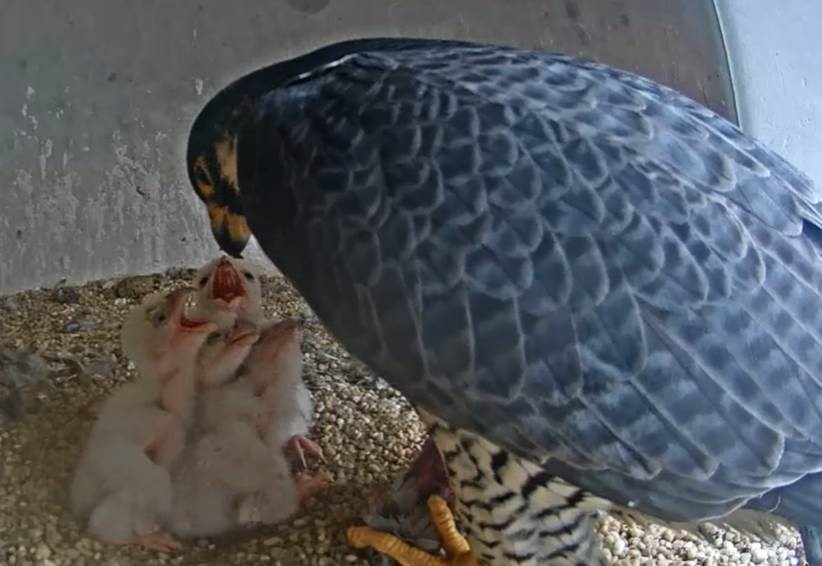

On May 2, 2023 Kathy Clark, NJDEP Fish & Wildlife, Cathy Malok, The Raptor Trust and JD Stamler, Trailside Park Naturalist visited this eyrie (nest of a bird of prey) to medicate all young for trichomoniasism, which is a pigeon borne disease that can be transferred to young falcons and be deadly. As we have already seen pigeon prey come into the nestbox, this treatment is crucial to the survival of this brood. The live stream continued during this treatment, and falcon cam viewers were made aware that the adults would be upset by their arrival on the rooftop. The young were removed from the nestbox for treatment and then placed back shortly thereafter. The adults returned once all human disturbance ended. The whole process took about 10-15 minutes.
Four Babies Hatched
Four Babies Hatched on top of the Union County Courthouse in Elizabeth!
Early afternoon on April 29, 2023 proud peregrine falcons, Frida and Mango, welcomed their fourth chick to the family on this rainy day. This pair of falcons have successfully raised chicks since 2019. Both parents will take turns incubating and feeding the chicks as they grow.
Fourth Egg
Frida laid her fourth egg on Sunday evening March 26! Now the pair will remain on their clutch of eggs for the next 28-30 days. This puts hatching to begin during the last week of April. While incubating their eggs, falcons will rest and sometimes have one eye open and one closed as pictured above. The female will do the majority of incubation but they will take turns incubating, so that Frida can stretch her wings and feed away from the nest.